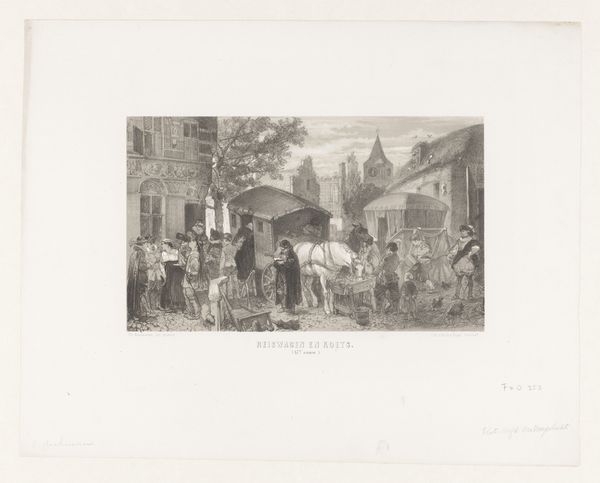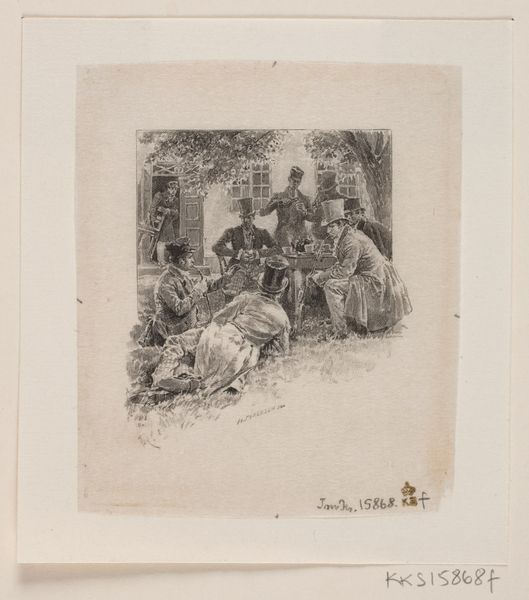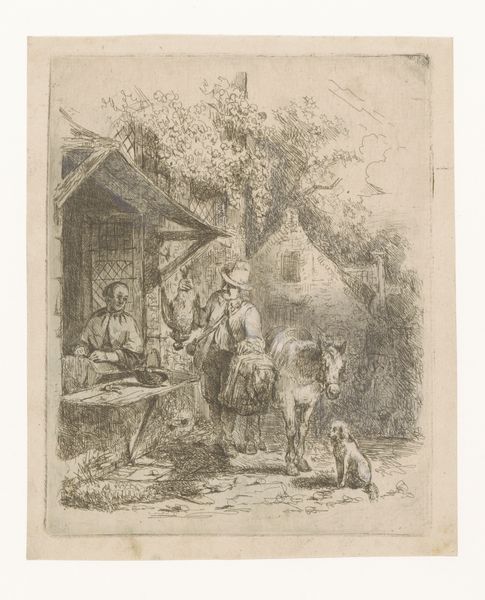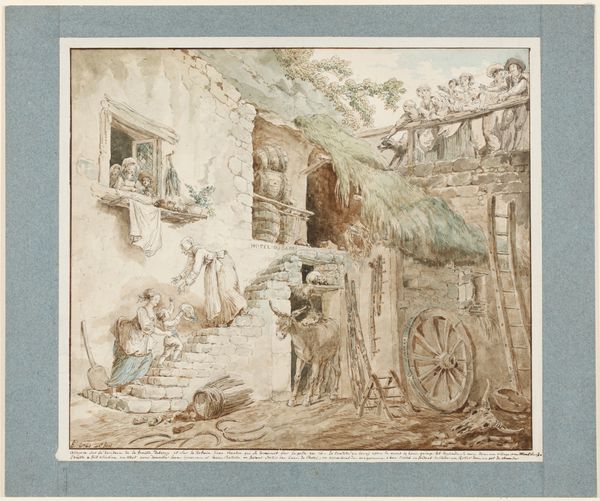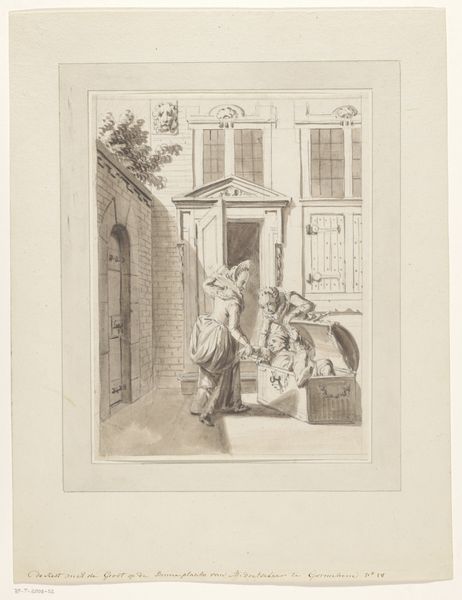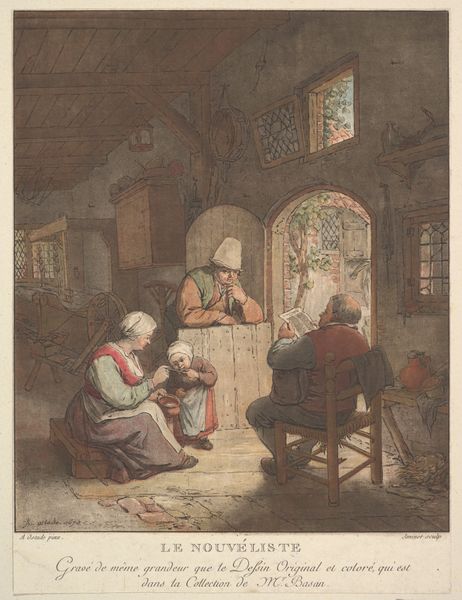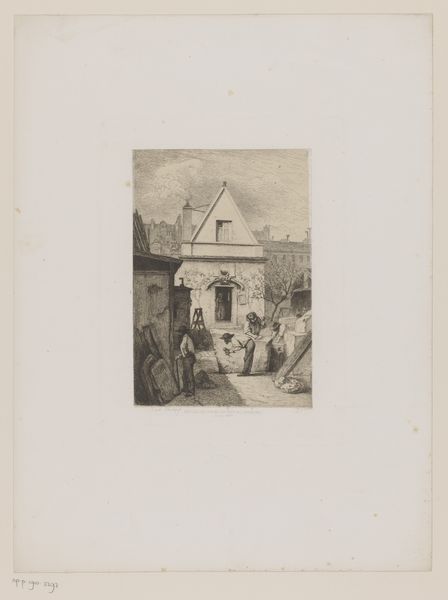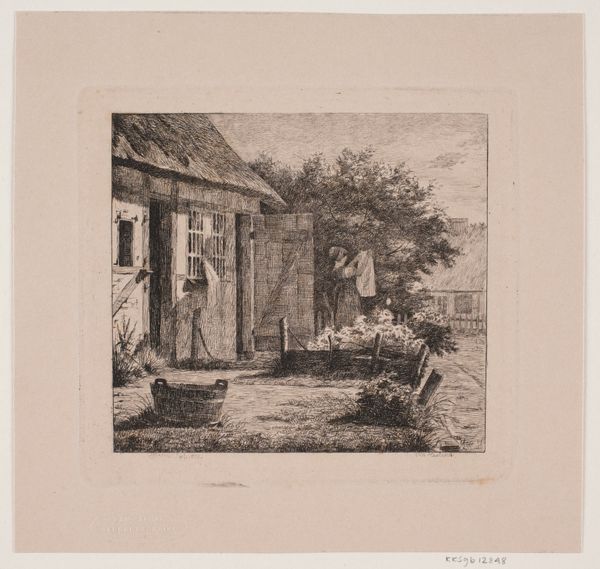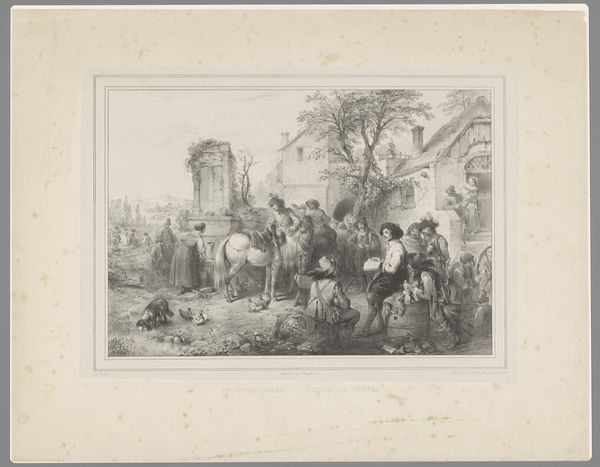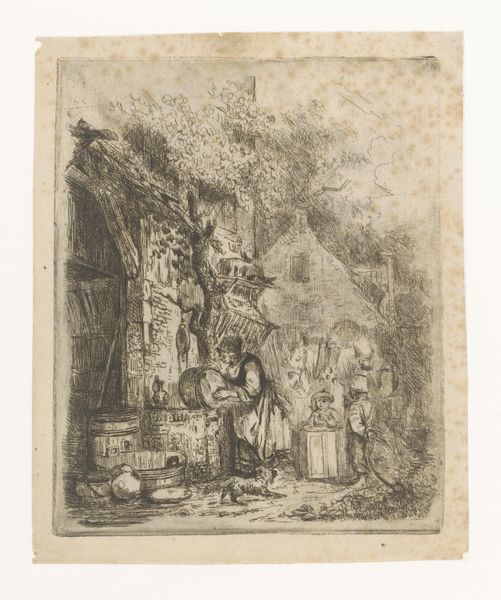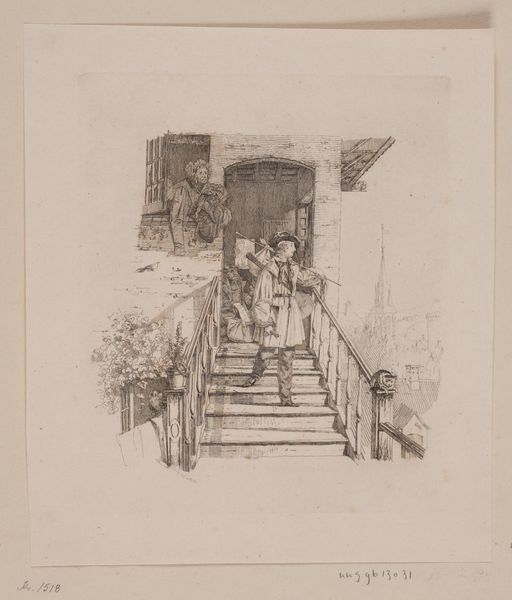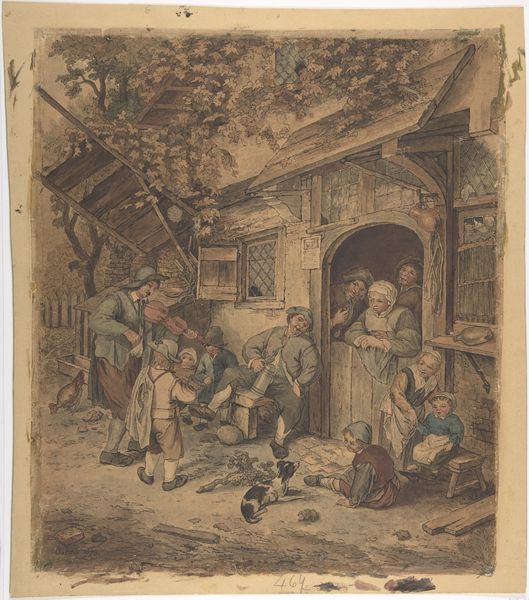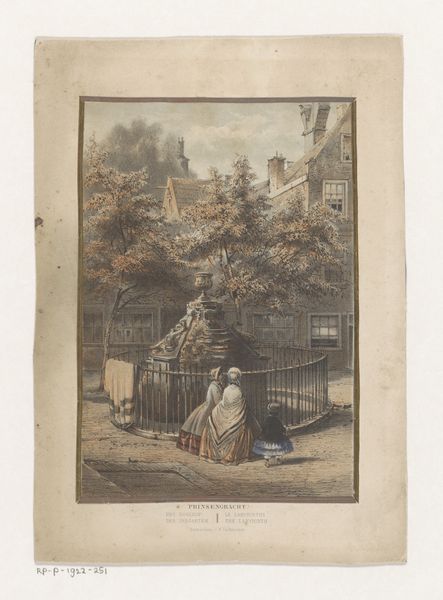
drawing, paper, watercolor, chalk, architecture
#
drawing
#
narrative-art
#
landscape
#
figuration
#
paper
#
watercolor
#
romanticism
#
chalk
#
genre-painting
#
watercolor
#
architecture
Copyright: Public Domain
Editor: This watercolor, chalk, and paper drawing titled "Das Abendbrot", or "The Supper" in English, was created in 1800 by Franz Niklaus König. It shows a rural scene with figures in front of a building. It strikes me as quite a staged, picturesque rendering of peasant life. What can you tell me about it? Curator: From a materialist perspective, this piece offers a window into the social construction of labor and leisure in 18th-century rural life. König's use of watercolor and chalk, applied to paper, mediates our understanding of "authenticity". Consider the context of its creation: who would have commissioned such a piece? What narratives about rural life were they interested in consuming? Editor: That’s interesting! It’s definitely not an unvarnished depiction, then. Are you suggesting it's a romanticized, idealized version aimed at a particular audience? Curator: Precisely. The medium itself—watercolor and chalk—allowed for portability and relative ease of production, which enabled the distribution of this image and the values it embodied to a wider audience, likely a more affluent one. The architectural features combined with the figure create a type of theater. What is being sold along with the image? Editor: I see. So, the *how* of its making, the portability and materials, directly connect to the *why* and the intended consumer. I had initially just seen it as a quaint scene. Curator: Consider the division of labor presented – women and children engaged in domestic activities, the architectural elements all hinting at a constructed sense of place and value. What relationship is created with this picturesque domestic life? The chosen medium enables this consumption, framing, and circulation of certain ideals about labor and domesticity. Editor: Right, it reframes my view to think about the physical materials as inherently tied to larger systems of production and consumption. I'll definitely look at art differently now! Curator: Examining the materials, and the means of production shifts our gaze away from purely aesthetic appreciation towards a more critical understanding of art’s role in perpetuating or challenging social hierarchies.
Comments
No comments
Be the first to comment and join the conversation on the ultimate creative platform.
